Talc has been a popular ingredient in cosmetics for decades due to its ability to absorb moisture and oil. However, concerns about its safety have been raised in recent years, leading many consumers to seek out talc-free makeup alternatives. Talc has been linked to cancer and respiratory problems, and the controversy surrounding it has led to a surge in demand for talc-free cosmetics.
The rise of talc-free makeup has been driven by the clean beauty movement, which emphasizes the use of natural and non-toxic ingredients. Many consumers are now looking for products that are free from harmful chemicals, including talc. Talc-free makeup is becoming increasingly popular among those who want to avoid potential health risks associated with talc and other questionable ingredients.
Key Takeaways
- Talc-free makeup is becoming more popular due to concerns about the safety of talc.
- The clean beauty movement is driving demand for talc-free cosmetics.
- Talc-free makeup offers a non-toxic alternative for those who want to avoid potentially harmful ingredients.
Understanding Talc and Its Concerns
What Is Talc?
Talc is a naturally occurring mineral that is commonly used in cosmetics due to its ability to absorb moisture and prevent caking. It is often found in baby powders, face powders, and other cosmetic products.
Health Risks Associated With Talc
There have been concerns about the safety of talc due to its potential link to cancer. Inhaling talc can cause respiratory problems, and long-term exposure to talc has been linked to lung cancer and mesothelioma, a rare cancer that affects the lining of the lungs, abdomen, and heart.
Talc, Asbestos, and Cancer Links
Talc and asbestos are both naturally occurring minerals that are often found together. Asbestos is a known carcinogen, and exposure to asbestos has been linked to lung cancer, mesothelioma, and other respiratory illnesses. Because talc and asbestos are often found together, there have been concerns that talc-containing products may be contaminated with asbestos.
Several lawsuits have been filed against companies that manufacture talc-containing products, alleging that their products caused ovarian cancer in women who used them. While some studies have suggested a link between talc use and ovarian cancer, the evidence is not conclusive, and more research is needed to determine if there is a causal relationship.
Overall, while there are concerns about the safety of talc, the evidence is not clear-cut, and more research is needed to fully understand the potential health risks associated with talc-containing products. Consumers who are concerned about the safety of talc may wish to choose talc-free cosmetics as a precaution.
The Rise of Talc-Free Makeup
As consumers become more aware of the ingredients in their beauty products, the demand for safer and cleaner makeup options has increased. One particular ingredient that has come under scrutiny in recent years is talc. Talc is a mineral that has been used in cosmetics for decades, but concerns about its safety have led to a rise in talc-free makeup options.
Consumer Demand for Safer Products
Consumers are becoming more educated about the ingredients in their makeup and are seeking out products that are free from potentially harmful substances. Talc has been linked to various health concerns, including the risk of ovarian cancer when used in the genital area. As a result, many consumers are opting for talc-free makeup options.
In response to this demand, many beauty brands have started to offer talc-free alternatives. These products are often marketed as “clean” or “safe” makeup options and are formulated with alternative ingredients such as cornstarch or rice powder.
Regulatory Perspective and FDA Involvement
The US Food and Drug Administration (FDA) regulates cosmetic products and their ingredients. While talc is considered safe for use in cosmetics, the FDA has stated that it will continue to monitor the safety of talc and take action if necessary.
In recent years, the FDA has conducted studies on the safety of talc in cosmetics. In 2019, the agency found that some cosmetic products containing talc were contaminated with asbestos, a known carcinogen. As a result, the FDA recommended that companies test their talc-containing products for asbestos.
The FDA’s involvement in regulating talc in cosmetics has further fueled the demand for talc-free makeup options. Consumers are increasingly looking for products that have been tested and verified to be safe by regulatory agencies.
In conclusion, the rise of talc-free makeup is a response to the growing demand for safer and cleaner beauty products. As consumers become more educated about the ingredients in their makeup, they are seeking out products that are free from potentially harmful substances. The regulatory perspective and FDA involvement in monitoring the safety of talc in cosmetics have also contributed to the popularity of talc-free makeup options.
Benefits of Talc-Free Cosmetics
Talc is a mineral that has been used in cosmetics for decades. However, recent studies have shown that talc can be harmful to health and the environment. As a result, many cosmetics companies are now producing talc-free makeup. Here are some of the benefits of using talc-free cosmetics.
Health and Safety Advantages
Talc is often used as a filler in cosmetics, but it has been linked to health problems such as lung cancer and ovarian cancer. Talc particles can be inhaled or absorbed through the skin, which can lead to health issues. By using talc-free cosmetics, individuals can reduce their exposure to this potentially harmful mineral.
Talc-free cosmetics are also beneficial for individuals with sensitive skin. Talc can dry out the skin, leading to irritation and inflammation. By using talc-free cosmetics, individuals can avoid these negative side effects.
Environmental and Ethical Considerations
Talc mining can have a negative impact on the environment. Talc is often mined in open-pit mines, which can lead to deforestation, soil erosion, and water pollution. By using talc-free cosmetics, individuals can reduce their environmental footprint and support sustainable practices.
Many cosmetics companies are also committed to ethical considerations such as vegan and cruelty-free practices. By using talc-free cosmetics that are also vegan and cruelty-free, individuals can support companies that align with their values.
In summary, talc-free cosmetics offer a range of benefits, including reduced health risks, improved skin health, and support for ethical and sustainable practices. By choosing talc-free cosmetics, individuals can make a positive impact on their health and the environment.
Ingredients to Look for in Talc-Free Makeup
When it comes to talc-free makeup, there are a few key ingredients to look for that can provide the same benefits without the potential health risks associated with talc. Here are some natural and safe alternatives to talc that you should consider:
Natural and Safe Alternatives to Talc
- Mica: Mica is a natural mineral that is often used as a replacement for talc in makeup products. It provides a smooth and silky texture, and can also add a subtle shimmer to the skin.
- Cornstarch and Rice Starch: These plant-based starches are commonly used as alternatives to talc in powders and other makeup products. They absorb oil and moisture, and can help to reduce shine and keep the skin looking matte.
- Silica: Silica is a naturally occurring mineral that can be used as a replacement for talc in makeup products. It provides a soft and smooth texture, and can also help to absorb excess oil and moisture.
- Natural Mineral and Mineral Pigments: These natural ingredients are often used in place of synthetic pigments that can be found in talc-based makeup products. They provide vibrant and long-lasting color, and can also offer additional benefits such as sun protection and anti-inflammatory properties.
Understanding Labels and Certifications
When shopping for talc-free makeup, it’s important to understand the different labels and certifications that are used to indicate the safety and quality of the product. Look for products that are labeled as “talc-free” or “free from harmful chemicals”, and check for certifications such as “organic” or “cruelty-free”. These labels and certifications can help you to make informed decisions about the products you use on your skin.
In conclusion, there are many natural and safe alternatives to talc that can be used in makeup products. By understanding the different ingredients and labels, you can make informed choices about the products you use on your skin, and reduce your exposure to potentially harmful chemicals.
Popular Talc-Free Makeup Brands and Products
When it comes to talc-free makeup, there are a variety of brands and products available on the market. Here are some of the most popular talc-free makeup brands and products that you can consider.
Foundations and Powders
Ilia: Ilia is a popular brand that offers talc-free foundations and powders. Their True Skin Serum Foundation is a lightweight, medium coverage foundation that is perfect for everyday wear. It is infused with nourishing botanicals and comes in a variety of shades to match different skin tones. Ilia’s Soft Focus Finishing Powder is another talc-free option that helps to blur imperfections and set makeup in place.
RMS Beauty: RMS Beauty is another brand that offers talc-free foundations and powders. Their “Un” Powder is a translucent setting powder that helps to absorb excess oil and set makeup in place. It is made with only the finest ingredients, including silica and kaolin clay, to help blur imperfections and create a soft-focus effect.
Kosas: Kosas is a clean beauty brand that offers talc-free foundations and powders. Their Tinted Face Oil is a lightweight, sheer coverage foundation that is perfect for those who prefer a natural, dewy look. It is infused with nourishing botanicals and comes in a variety of shades to match different skin tones. Kosas’ Cloud Set Baked Setting and Smoothing Talc-Free Powder is another talc-free option that helps to set makeup in place and blur imperfections.
Eyeshadows and Lip Products
100% Pure: 100% Pure is a natural beauty brand that offers talc-free eyeshadows and lip products. Their Fruit Pigmented Eyeshadows are made with real fruit pigments and come in a variety of shades to create different looks. They are also infused with nourishing ingredients like green tea and vitamin E to help protect and nourish the delicate skin around the eyes. 100% Pure’s Fruit Pigmented Lipsticks are another talc-free option that come in a variety of shades to match different skin tones and preferences.
Tower 28: Tower 28 is a clean beauty brand that offers talc-free eyeshadows and lip products. Their ShineOn Jelly Lip Gloss is a hydrating, non-sticky lip gloss that comes in a variety of shades to create different looks. It is made with nourishing ingredients like apricot kernel and raspberry seed oil to help soothe and protect the lips. Tower 28’s BeachPlease Tinted Lip + Cheek Balm is another talc-free option that is perfect for creating a natural, dewy look.
Jane Iredale: Jane Iredale is a natural beauty brand that offers talc-free eyeshadows and lip products. Their PurePressed Eye Shadow is a highly pigmented, talc-free eyeshadow that comes in a variety of shades to create different looks. It is also infused with nourishing ingredients like pine bark extract and pomegranate extract to help protect and nourish the delicate skin around the eyes. Jane Iredale’s PureMoist Lipstick is another talc-free option that comes in a variety of shades to match different skin tones and preferences.
Juice Beauty: Juice Beauty is a natural beauty brand that offers talc-free eyeshadows and lip products. Their Phyto-Pigments Cream Shadow Stick is a long-wearing, talc-free eyeshadow that comes in a variety of shades to create different looks. It is also infused with nourishing ingredients like coconut oil and shea butter to help hydrate and protect the delicate skin around the eyes. Juice Beauty’s Phyto-Pigments Satin Lip Cream is another talc-free option that comes in a variety of shades to match different skin tones and preferences.
How to Choose the Right Talc-Free Makeup
When it comes to choosing makeup products that are free of talc, there are a few key factors to consider. From skin type to performance, evaluating these factors can help you find the right talc-free makeup that works for you.
Considering Skin Type and Concerns
One of the most important factors to consider when choosing talc-free makeup is your skin type and any specific concerns you may have. For those with sensitive skin, it’s important to look for products that are fragrance-free and formulated with gentle, non-irritating ingredients. Those with oily skin may want to opt for talc-free products that have a matte finish, while those with dry skin may prefer products that offer a more hydrating and dewy finish.
Evaluating Pigmentation and Performance
Another important factor to consider when choosing talc-free makeup is the pigmentation and performance of the product. When it comes to color payoff, it’s important to look for products that offer vibrant, long-lasting color without the use of talc. For those who prefer a more natural look, products with subtle pigmentation may be a better fit. In terms of performance, it’s important to look for products that apply smoothly and evenly, without any patchiness or streaking.
Overall, choosing the right talc-free makeup requires careful consideration of your individual needs and preferences. By evaluating factors such as skin type, pigmentation, and performance, you can find the perfect talc-free products to enhance your natural beauty.
Application Tips for Talc-Free Makeup
When it comes to applying talc-free makeup, there are a few things to keep in mind to achieve the desired finish and ensure longevity and wear.
Achieving Desired Finish
One of the benefits of talc-free makeup is that it can provide a more natural, matte finish. To achieve this finish, it’s important to start with a clean, moisturized face and apply a primer before foundation or powder. This will help create a smooth base for the makeup and ensure it stays in place throughout the day.
When applying foundation or powder, use a brush or sponge to blend it evenly onto the skin. For a more natural look, apply in thin layers and build up coverage gradually. If you prefer a more dewy or shimmering look, look for talc-free products with a shimmer or luminous finish.
Longevity and Wear
Talc-free makeup can sometimes require a bit more effort to ensure it stays in place throughout the day. To increase longevity, consider using a setting spray or powder to lock in the makeup. This can also help reduce shine and oiliness.
When choosing talc-free makeup, look for products that are labeled as long-wearing or have a reputation for lasting throughout the day. Additionally, consider using a primer specifically designed to prolong the wear of makeup.
Overall, applying talc-free makeup requires a bit of extra attention, but the benefits of a natural finish and potentially longer wear make it worth the effort. By following these tips, anyone can achieve a flawless look with talc-free makeup.
Navigating Challenges with Talc-Free Makeup
As more people become aware of the potential health risks associated with talc-based cosmetics, the demand for talc-free makeup has increased. While talc-free makeup is generally considered safer, it does come with its own set of challenges. In this section, we will explore some of the common issues with talc-free makeup and provide solutions to help you navigate them.
Common Issues and Solutions
Irritation
One of the most common issues with talc-free makeup is skin irritation. This can be caused by a variety of factors, including the use of certain ingredients that are known to irritate the skin. To avoid irritation, it is important to choose talc-free makeup that is specifically formulated for sensitive skin. Look for products that are free of fragrances, preservatives, and other potential irritants.
Harmful Ingredients
While talc-free makeup is generally considered safer than talc-based cosmetics, it is still important to be aware of potentially harmful ingredients. Some talc-free makeup products may contain ingredients such as parabens, phthalates, and formaldehyde-releasing agents, which have been linked to health concerns. To avoid these ingredients, it is important to read product labels carefully and do your research before making a purchase.
Questionable Ingredients
In addition to potentially harmful ingredients, some talc-free makeup products may also contain ingredients that are of questionable safety. For example, some natural ingredients may be contaminated with heavy metals or other toxins. To stay informed about these types of issues, it is important to keep up with product recalls and stay informed about any potential risks associated with the ingredients in your makeup.
Staying Informed About Product Recalls
To stay informed about product recalls, it is important to keep up with news and information from reputable sources. You can also sign up for email alerts from the FDA or other regulatory agencies to stay informed about any potential risks associated with the products you use. Additionally, it is important to keep track of the products you use and check for any recalls or safety alerts on a regular basis.
Overall, while talc-free makeup may come with its own set of challenges, it is generally considered a safer alternative to talc-based cosmetics. By being aware of potential issues and staying informed about product recalls, you can help ensure that the makeup you use is safe and healthy for your skin.
The Future of Talc-Free Makeup in the Beauty Industry
As consumers become more aware of the potential health risks associated with talc, the demand for talc-free makeup is on the rise. The beauty industry has taken notice and is making efforts to meet this demand. In this section, we will explore the future of talc-free makeup in the beauty industry, including innovations and new developments, as well as the role of consumer advocacy.
Innovation and New Developments
In recent years, the beauty industry has made significant strides in developing talc-free makeup products. Many companies are now using alternative ingredients, such as cornstarch, rice powder, and mica, to create products that are just as effective as those containing talc. These alternatives not only provide a safer option for consumers but also offer additional benefits, such as increased absorbency and improved texture.
In addition, some companies are taking a more holistic approach to creating talc-free makeup. They are focusing on creating products that are not only free of talc but also free of other potentially harmful ingredients, such as parabens, phthalates, and sulfates. This approach, known as clean beauty, is becoming increasingly popular among consumers who are looking for safer, more natural alternatives to traditional makeup products.
The Role of Consumer Advocacy
Consumer advocacy has played a significant role in driving the demand for talc-free makeup. Consumers are becoming more educated about the potential health risks associated with talc, thanks in part to advocacy groups and social media campaigns. As a result, they are demanding safer alternatives from the beauty industry.
In response, many companies are becoming more transparent about their ingredients and manufacturing processes. They are also working to develop new products that meet the demands of their customers. This increased transparency and responsiveness to consumer demand is a positive trend that is likely to continue in the future.
In conclusion, the future of talc-free makeup in the beauty industry looks bright. With continued innovation and a growing focus on clean beauty, consumers can expect to have access to safer, more natural makeup products in the years to come.
Frequently Asked Questions
What are the top talc-free makeup brands currently on the market?
There are several talc-free makeup brands available in the market, including BareMinerals, Tarte, and Physicians Formula. These brands offer a wide range of makeup products, including foundation, blush, eyeshadow, and lipstick, that are free from talc.
How can I identify makeup products that are talc-free?
To identify talc-free makeup products, you should check the list of ingredients on the packaging. Look for products that explicitly state that they are talc-free or do not contain talc in their ingredients list. You can also look for products that use natural ingredients, such as mica and cornstarch, as alternatives to talc.
Are there affordable options for talc-free cosmetic products?
Yes, there are affordable options for talc-free cosmetic products. Drugstore brands like Milani, NYX, and Covergirl offer talc-free makeup products that are affordable and easily accessible.
Why might someone choose to use talc-free makeup?
Talc-free makeup is a great option for people with sensitive skin or those who are concerned about the potential health risks associated with talc. Talc is a mineral that can cause skin irritation and has been linked to cancer when inhaled. Using talc-free makeup can help reduce the risk of these health concerns.
Can you find talc-free makeup at popular retailers like Sephora and Ulta?
Yes, popular retailers like Sephora and Ulta offer talc-free makeup products from various brands. You can find talc-free makeup products by searching for them on the retailer’s website or by asking a sales associate for assistance.
What are the benefits of using talc-free makeup for children?
Talc-free makeup is a safe and healthy option for children who enjoy playing with makeup. Children’s skin is delicate and sensitive, and talc can cause skin irritation and other health concerns. Using talc-free makeup can help reduce the risk of these health concerns and ensure that children can safely enjoy playing with makeup.
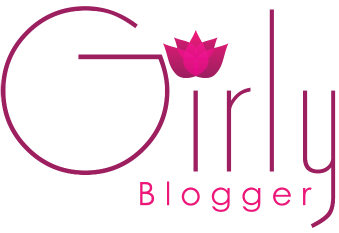
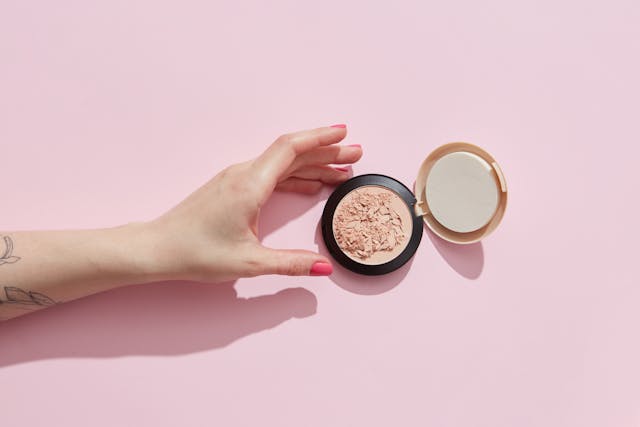
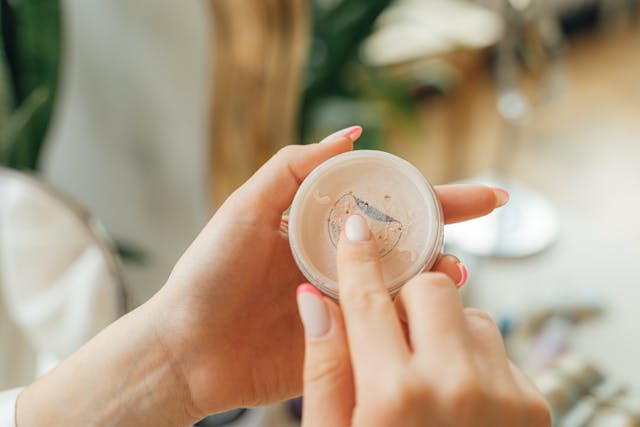
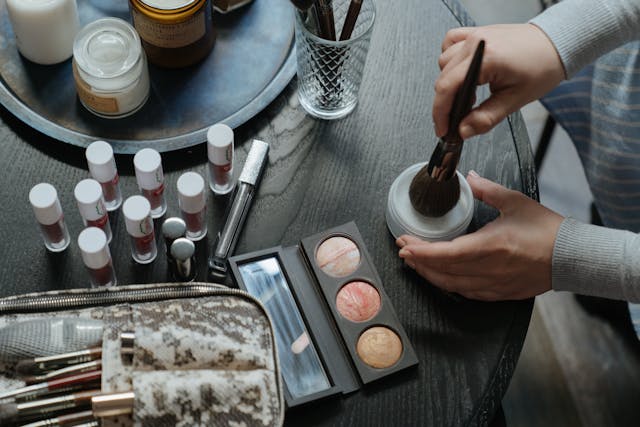
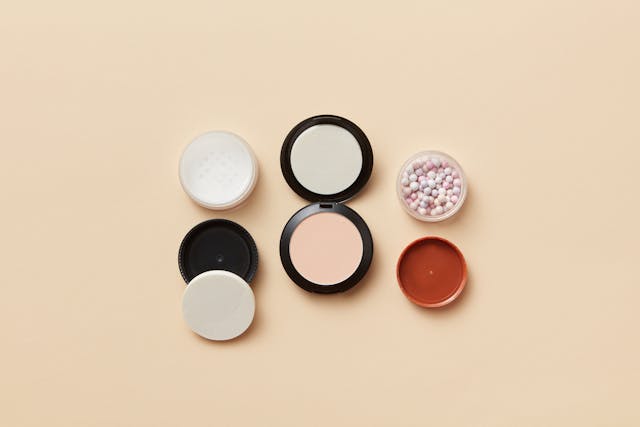
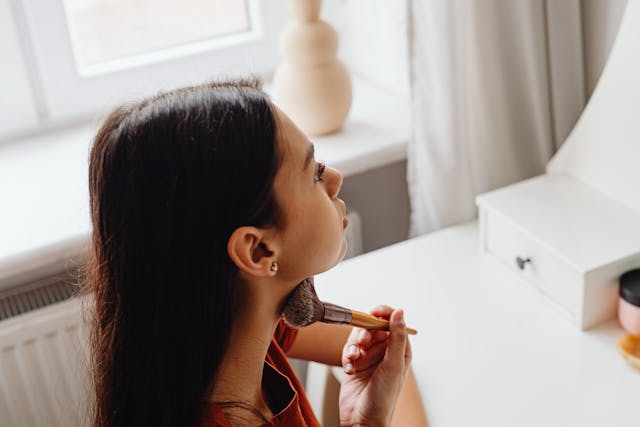
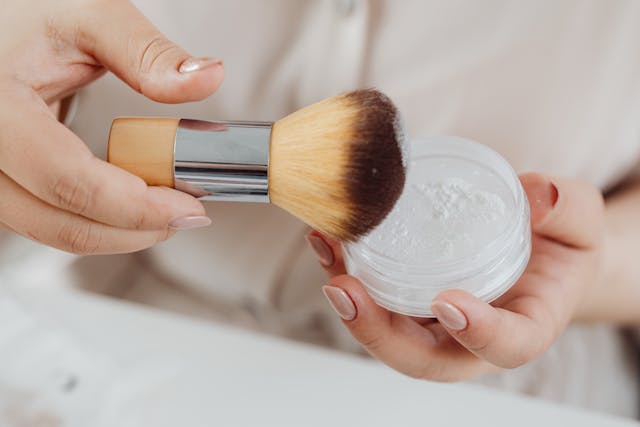







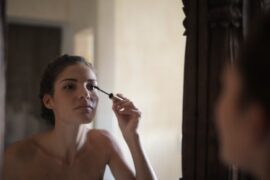
Comments are closed.